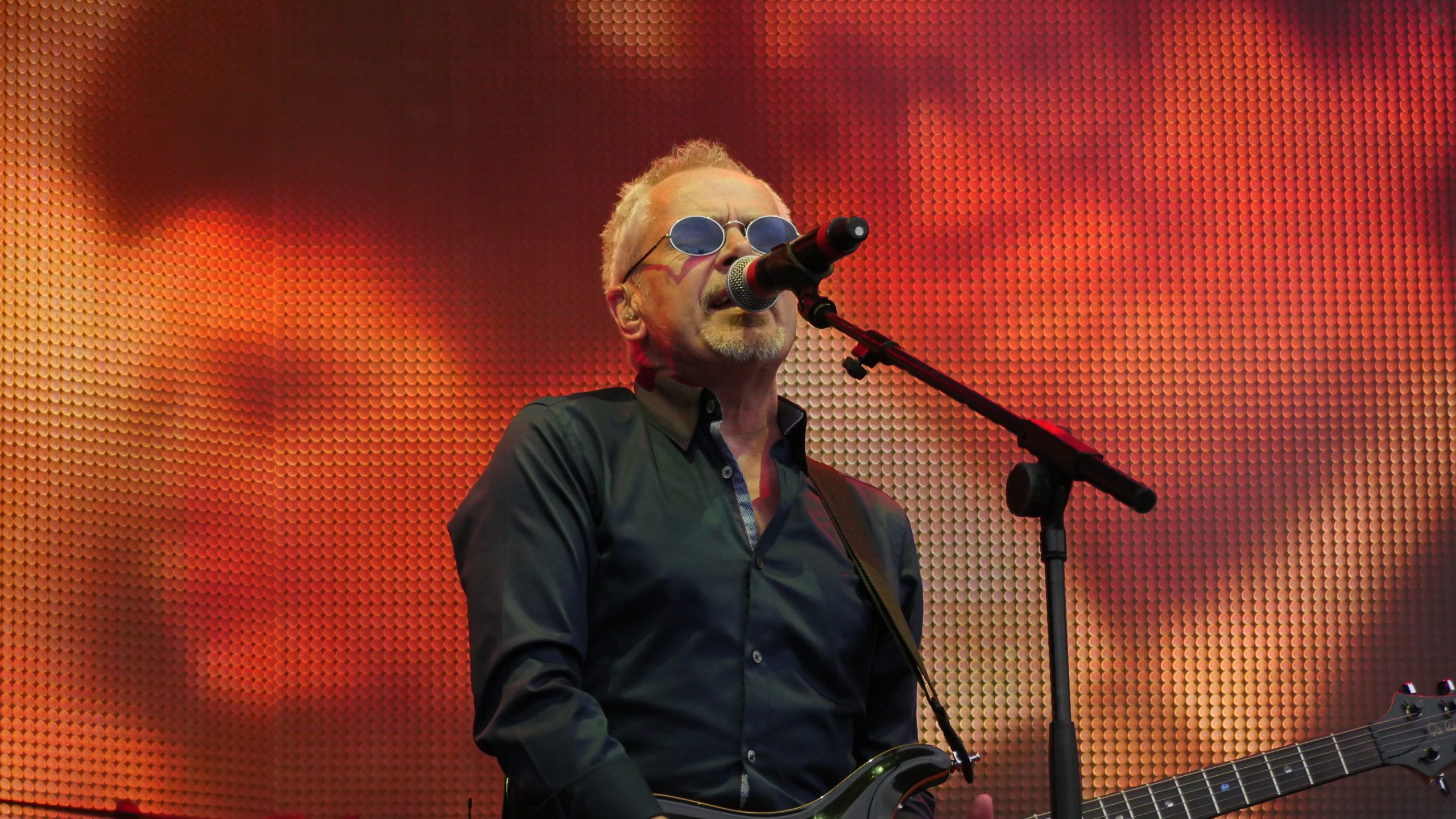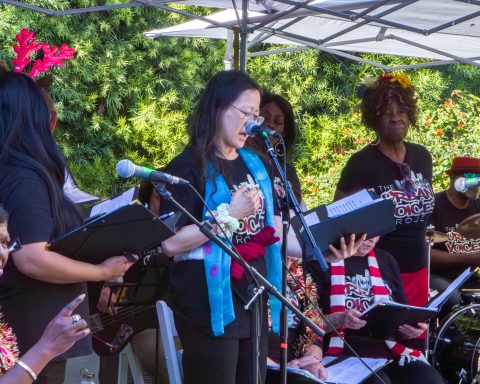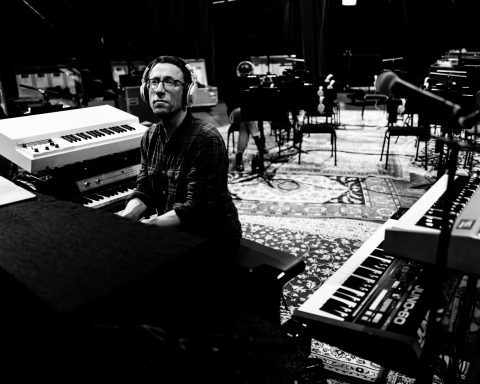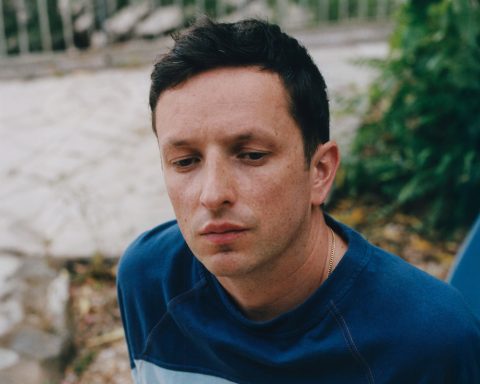In 1984, Suffolk-based songwriter Nik Kershaw introduced himself to the pop world with a bang, releasing two top 10 albums and a slew of classic singles, such as “I Won’t Let the Sun Go Down on Me,” “Wouldn’t It Be Good,” and “The Riddle.” After writing and producing for other artists, the much-underrated songwriter and guitarist—lauded by highly respected musicians including Elton John, Eric Clapton, and even jazz legend Miles Davis—eventually returned to making records, culminating in 2020’s career highlight Oxymoron. Meanwhile, his former label has scoured the vaults and is releasing a comprehensive 10 CD + DVD box set called The MCA Years.
Quest for Fame
You decided to try your hand at fame in your teenage years. Did that obsession interfere with your academic studies?
Yes, very much so. I decided halfway through my A levels that I’d had enough and would stop school, get a job, buy a big truck, and tour the world with my rehearsal band, but I ended up working for the unemployment benefit office for about three years. I was writing songs, but the band spent more time going down to the pub than doing any gigs. Then I got headhunted as a guitarist for a pro band playing Weather Report and Steely Dan hits. It was great trying to get my head around some of that stuff, and I did record a few bits and pieces that later became hits. One was “Look Behind You,” which became the song “Human Racing,” and I wrote “Wide Boy” then, too.
Your hit, “I Won’t Let the Sun Go Down on Me,” was only successful after it was re-released. Why do you think that was?
In those days, record companies built careers and expected a few hiccups before anything kicked in. I was a bit of an outsider and didn’t hang around clubs in London. So the first time it was released, it just got my name familiar with DJs, record stations, and record stores. Nobody was that bothered that it got to No. 47, but by the time “Wouldn’t It Be Good” came out, everybody knew who I was. Once you have a name for yourself and you’re on the TV all the time, it seems so easy, and I released the single into a different world.
“Once you have a name for yourself and you’re on the TV all the time, it seems so easy.”
You recorded most of your early LPs at Trevor Horn’s Sarm Studios. What was behind that choice?
MCA put me in touch with Peter Collins, who I only knew because he’d recorded Musical Youth’s “Pass the Dutchie.” I didn’t understand how that would work, but some of his other stuff sounded extraordinary. Peter was old school and good at getting the best out of whoever he produced; he was also mates with Trevor Horn. We were aware of something big happening at Sarm with Frankie Goes to Hollywood, and I remember hearing the first version of “Two Tribes” because the two studios used the same engineers. We thought, bloody hell, so that’s where the bar is.

Introduction to Roland Synths
You’re a terrific guitarist, but what attracted you to using synthesizers to embellish your sound?
I guess I saw keyboard players having all the fun and remember Thomas Dolby being a big hero of mine. I grew up with Led Zeppelin, Deep Purple, and Jeff Beck, and I loved guitars, but they weren’t very trendy to play in the early ’80s. After getting my advance from MCA, the first synth I bought was a JUNO-6, which was a great introduction to keyboards for a non-keyboard player because it’s very immediate. The ADSR is right in front of you, and if you move a knob, it makes a difference because there’s nothing subtle about the filters.
I couldn’t afford a JUNO-60, but the JUNO-6 was easy to use and could perform any particular function, whether it was a piano envelope, pad, or flute sound. It also had a really cool arpeggiator. If you put your hands in a certain place, it actually plays the sequence to “Dancing Girls,” and if you put them somewhere else, it plays the bass line to “Don Quixote.” So the keyboard began writing those two songs for me.
“The first synth I bought was a JUNO-6, which was a great introduction to keyboards for a non-keyboard player because it was very immediate.”
You also acquired a Roland JUPITER-8.
It was very prevalent on my first two albums. We had a few keyboard players, Paul Wickens, whose main keyboard was an OBX-8, and Nick Glennie-Smith and Don Snow, who both had JUPITER-8s. In those days, we’d stack sounds via MIDI, so you couldn’t tell where they were coming from, but Roland was a huge part of my sound, playing the bulk of the pads and sounds alongside the Oberheim and PPG Wave, which sounded very alien but almost sentient. At Live Aid, we used a JUPITER-4 and an Emulator II for all the sample sounds. And, by then, I had a JUNO-60 out front.
Recognition from Legends
You’ve been praised by a number of artists, such as Herbie Hancock, Eric Clapton, and Miles Davis. Is that recognition as fulfilling as the success itself?
Very much so. Especially when you’ve just had a dreadful review from some spotty teenager who’s come to see your show, but you can console yourself by the fact that Miles Davis said “this” about me. If I’d just had the success and none of my peers had said anything nice, it might have been problematic.
There was a video circulating online of Miles Davis saying how he loved your track, “Wild Horses.”
We were making the video for “Don Quixote” in Spain, and there was a message at the reception desk at the hotel with a phone number that said Miles Davis had called. I thought, “This is ridiculous. Someone’s winding me up,” and didn’t think anything more of it. Then I was touring the States with Paul Young and looked to the side of the stage, and Miles Davis was standing there watching me play. We had a chat afterward. Allegedly, his band was going to do a live version of “Don Quixote” because he saw me play it at Live Aid, which is surreal.
"I was touring the States with Paul Young and looked to the side of the stage, and Miles Davis was standing there watching me play."
How did you get to work with Level 42’s Mark King on the track “Easy” from your second LP, The Riddle?
I watched Level 42 at a club in Southend, and the bass took my face off. Years later, I was doing rehearsals for Top of the Pops when I got a tap on the shoulder, and it was Mark. He said some nice things about the Human Racing album, and I mentioned I was recording the next one, so he asked if there was anything he could play on. I didn’t have anything, so I wrote “Easy” for Mark. I’m sure there wasn’t a demo; I just taught Mark the song, and he nailed it in a few takes. At first, he started playing with his fingers, but I thought, “No, I’ve got Mark King here; you’ve got to give me the thumb.”
Progressing as a Songwriter
Have you found that writing songs throughout a career gets progressively more challenging?
The first thing that happens is that it gets progressively more difficult not to repeat yourself, and it also becomes more difficult to surprise yourself. The writing process is all about recognizing something good when it comes along, and I think you lose that ability. Something turns up, and you think, “Oh, it’s that again,” or “This is easy, so it can’t be any good.” Creative energy is a big part of it, too. Success breeds that energy, and it’s much easier to complete a project when you know there’s an audience for it.
Now that I’m not making records as often, there’s a certain amount of “what’s the point-ism,” especially when it’s so difficult to make any revenue from recorded music. Making an album is like being at the bottom of a mountain—a part of you doesn’t even want to start climbing. Personally, I think that I’ve got to find a new way of approaching or recording a project to get the ball rolling.
Yesterday and Tomorrow
What can you tell us about your role in releasing the upcoming box set, The MCA Years?
My first reaction was, “Not another compilation.” But this is absolutely everything they’ve got, warts and all, so I didn’t have the responsibility of choosing the tracks. I had a go at remixing some live stuff from The Old Grey Whistle Test that I’d forgotten about, and then I discovered that the BBC still had the footage, so we got it digitized and synchronized, and now there’s a DVD with all the promo videos we could find.
Your last album, Oxymoron, is indescribably good. To what extent did working at Abbey Road contribute to the recording?
I think it made a big difference to the end product, but not the songwriting or bulk of the recording because I did most of that on my own. We were probably only at Abbey Road for four days. We spent a couple doing drums and bass, and there was another session for strings, backing vocals, and horns. I’d like the next one to be different somehow and will probably go back to releasing it on my own, but I do think it’s one of the best albums I’ve made, and I’m very proud of it.







